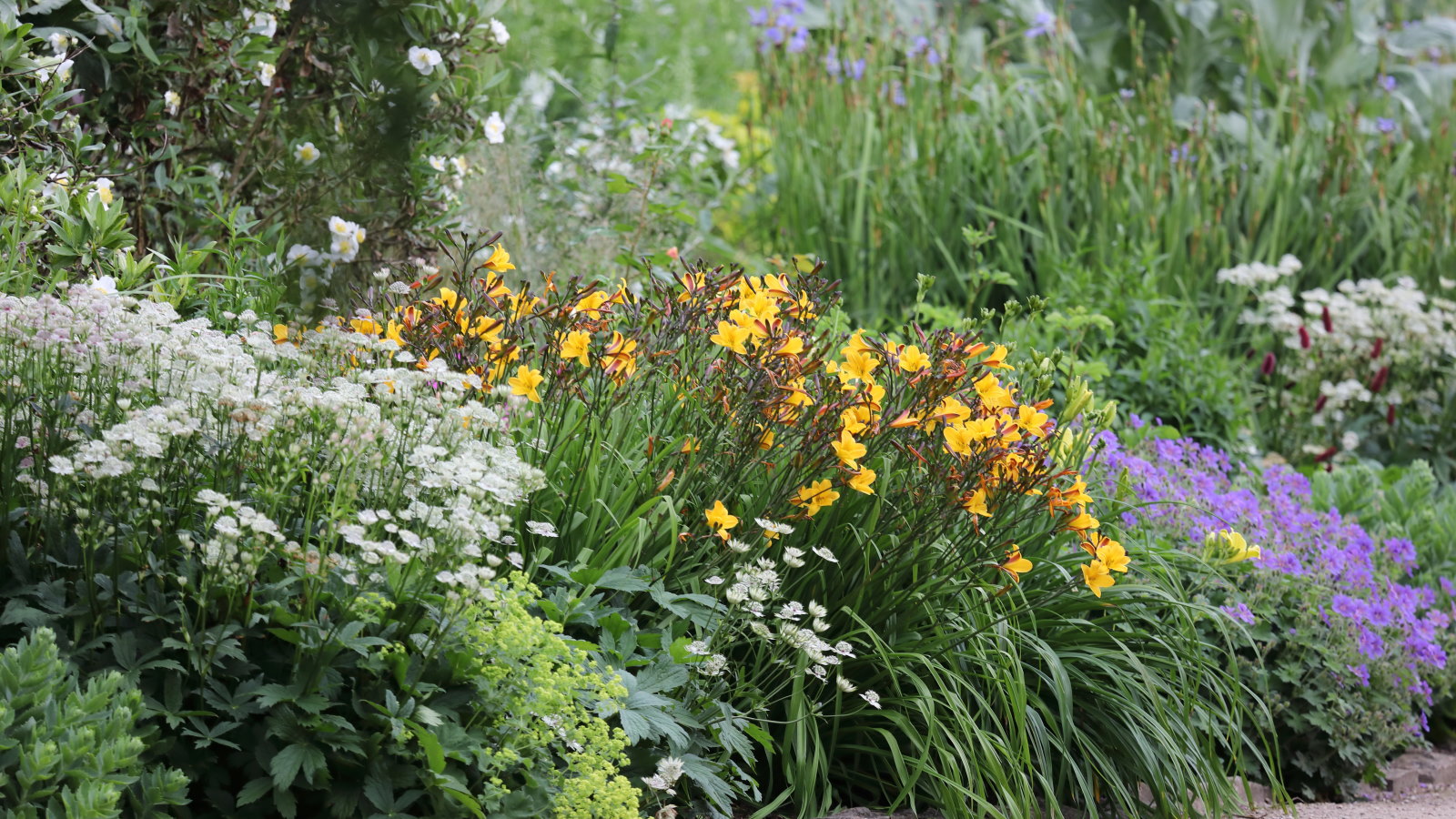
The summer chorus of herbaceous perennials lights up our flower beds with swathes of color, texture, and life, as pollinators are attracted to the bounty on offer. As the temperatures and light levels drop in fall, so does the display.
It does not need to mean the end of the road for all perennials, but some will benefit from being cut back in late fall to keep them healthy for next year. Cutting back ahead of winter will not only tidy up the backyard, but is also a proactive way to prevent pests and diseases from resurfacing in spring and troubling plants.
So, which perennials are best trimmed in fall and which can be left until spring? We want to help you keep your garden healthy, so here is our list of 10 perennials to cut back in the fall and the reasons why.
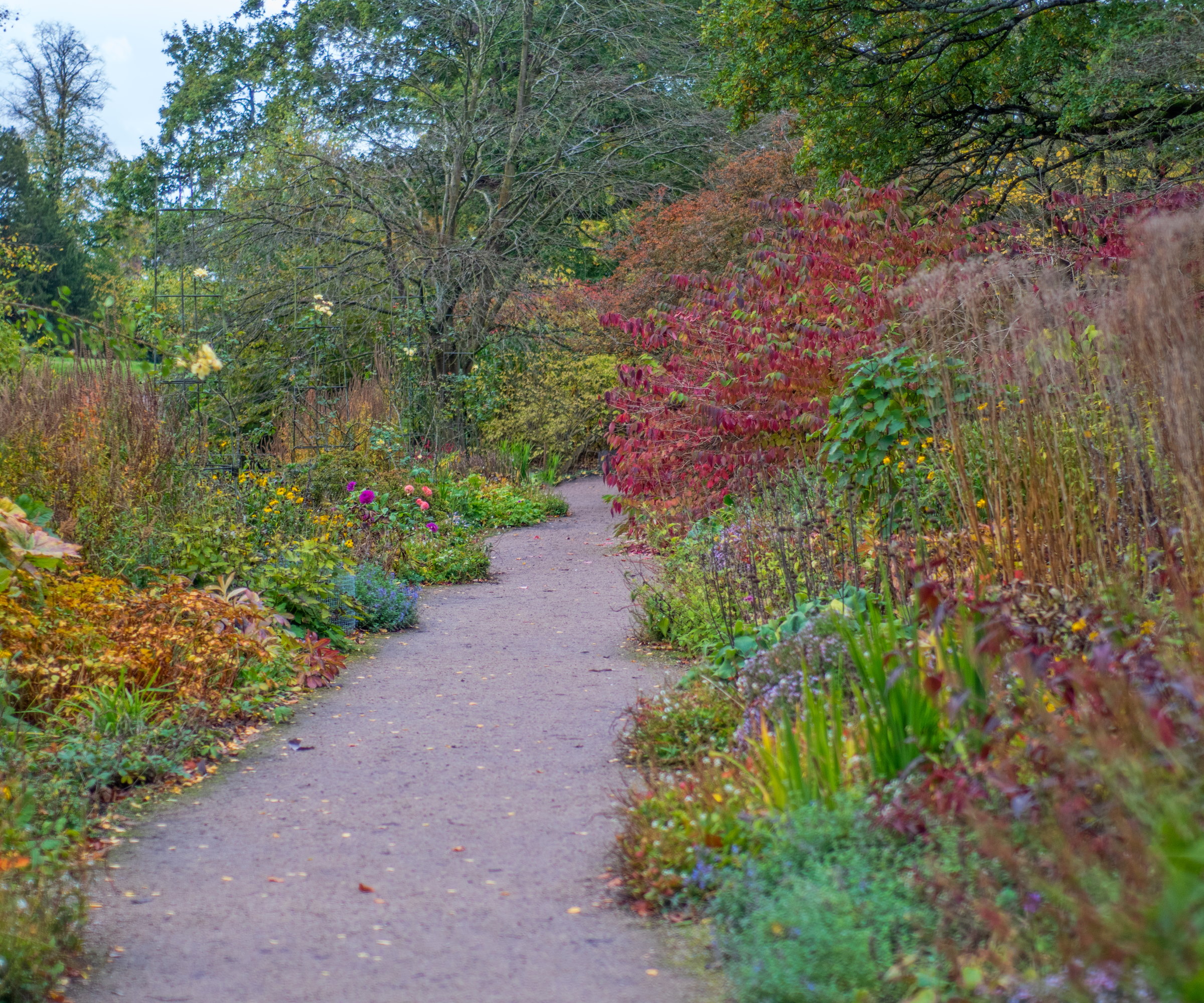
Should perennials be cut back in the fall?
Cutting back perennials is a job for the fall gardening checklist. However, not all perennials should be trimmed this season.
Some perennials can add interest to a winter garden and provide food or shelter for birds and beneficial insects as part of wildlife garden ideas during the colder months. These perennials, including ornamental grasses, sedum, coneflower, and black-eyed Susan, should be left and cut back in spring.
There are others, though, that can overwinter diseases and pests. These perennials should be cut back in the fall to prevent infections from returning next year.
1. Phlox
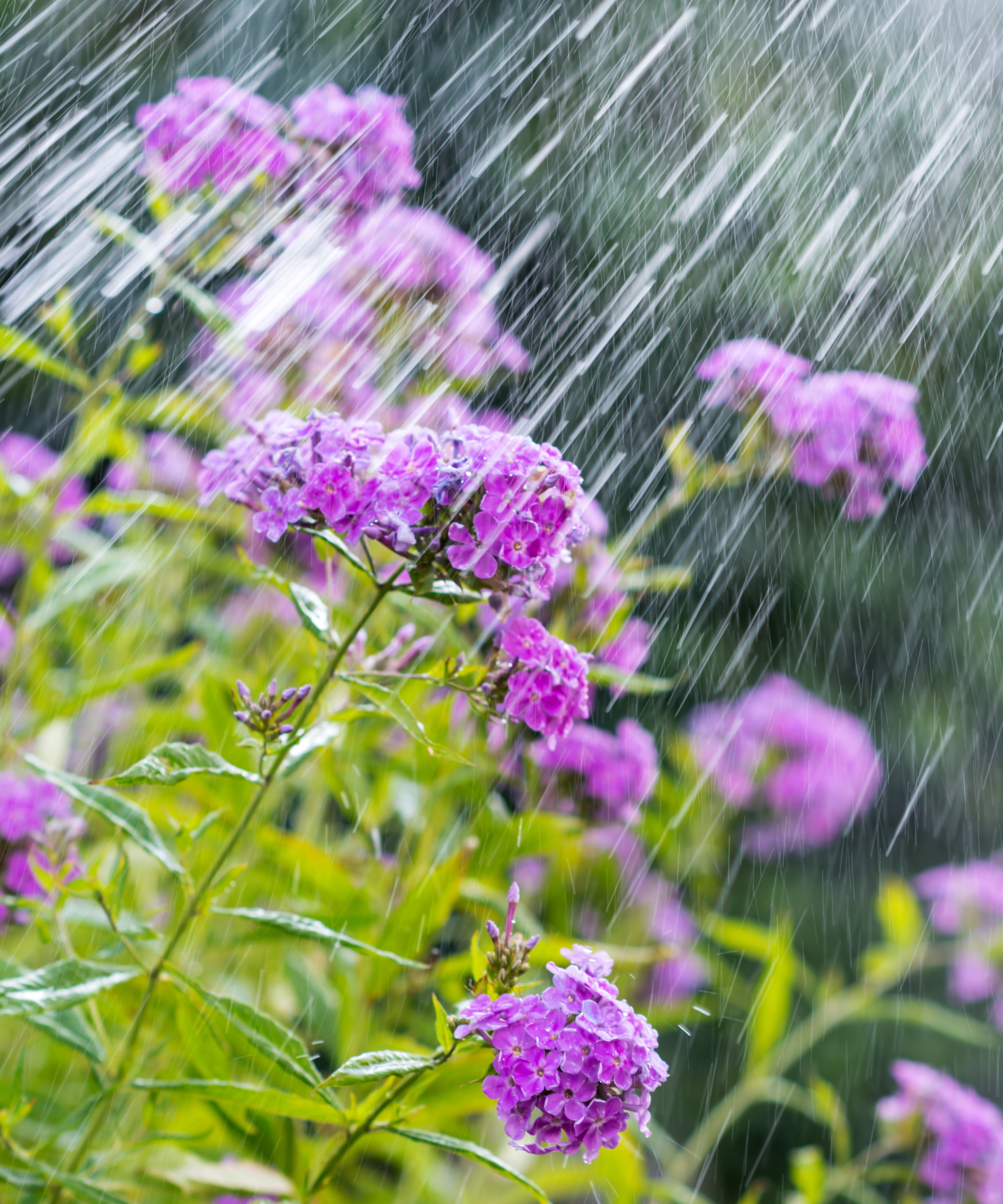
Phlox are dazzling plants for summer color in flower beds and borders. If you deadhead phlox you will get the longest blooming season possible, but the plants will start to look tired come late fall.
The top reason to cut back phlox in the fall is powdery mildew. Phlox is very susceptible to powdery mildew infections in wet and cold weather and it is usually a case of when and not if they will get infected.
Cutting back phlox combats any potential infection. If your plants show signs of powdery mildew, bag up and destroy the material and never use the stems or leaves to make compost.
2. Hostas

Some perennial plants are left as they can offer beauty in a winter garden. This is not the case with hostas as their slimy old foliage is best removed. It is not only for aesthetic reasons but because the dead leaves often house slug eggs.
Anyone with experience growing hostas knows that the plants are adored by slugs and snails These unwanted visitors also tend to lay their eggs in the foliage in fall to overwinter.
Cutting back hostas in the fall is a slug control method that prevents the eggs from overwintering and stops this new generation of slugs from appearing in spring to eat the hosta and other plants.
3. Irises
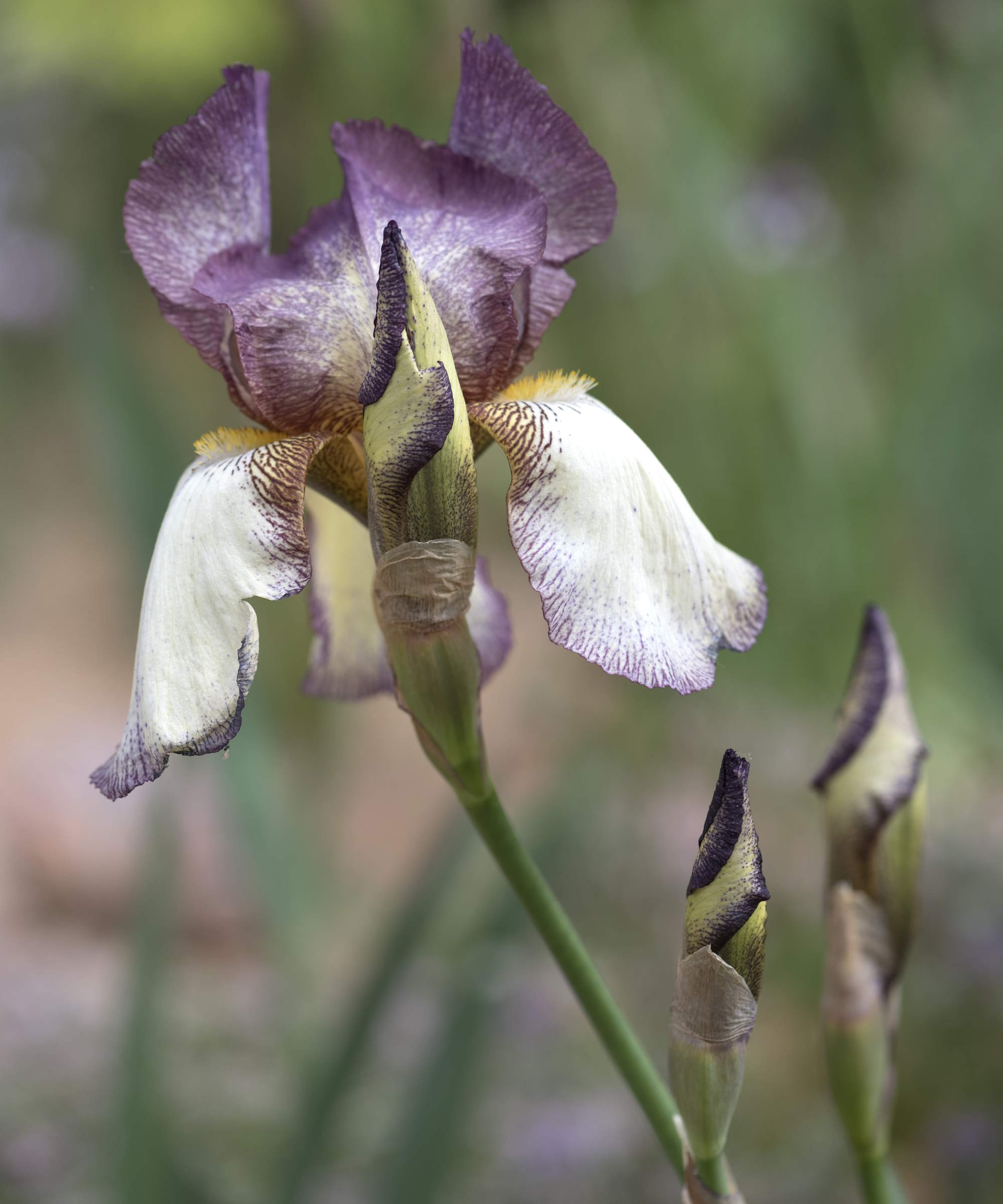
Growing irises can provide you with glorious color, you can get irises in many different shades and sizes to put on a show in summer. Cutting back irises in the fall is recommended to protect plants and ensure you get great displays year after year.
Iris foliage is very susceptible to fungal diseases when wet over the winter. It is best to prevent the spores from overwintering by cutting back the leaves after the frosts kill them. Furthermore, the iris borer - a moth that feeds on bearded iris rhizomes - also lays eggs on the foliage to overwinter. Trimming the foliage prevents more borers next year.
4. Peonies

Cutting back peonies in the fall helps prevent diseases, but it is important to get the timing right. You should prune peonies when the temperatures drop as plants are prone to powdery mildew. Cutting them back in the fall also reduces any risk of peony wilt in spring, a fungal infection that affects blooming which is a disaster when growing peonies.
Avoid making the peony pruning mistake of cutting back too early. The buds carrying next year’s flowers form in the fall, so wait until the first frosts have turned the foliage yellow before trimming the plant back. Pruning too early reduces the amount of stored energy for the next season.
5. Bee balm
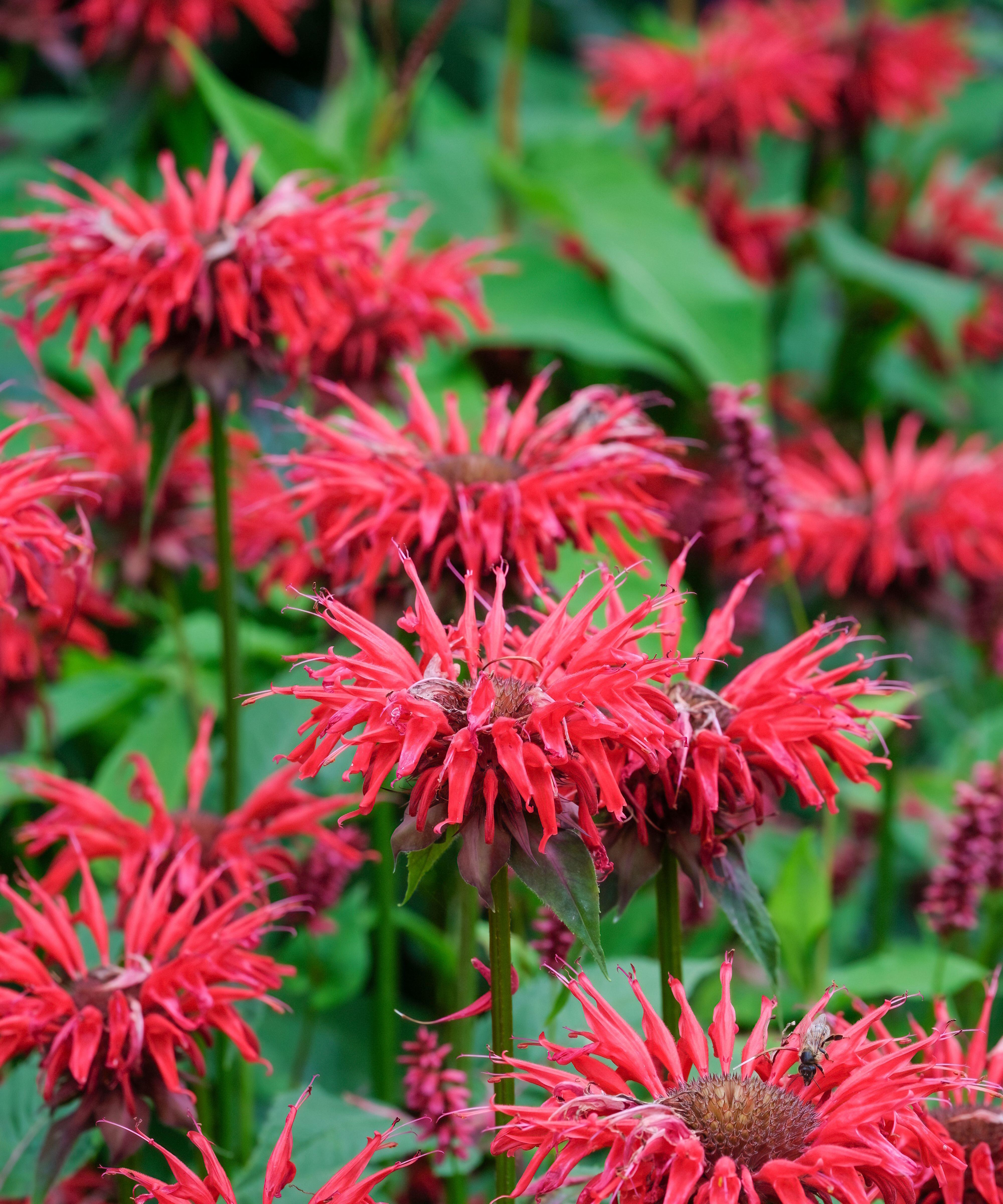
Bee balm is a native plant that produces flowers that attract bees (as the name suggests), hummingbirds and other pollinators to a garden. It can provide food for birds during the winter, though bee balm is another perennial that more often than not gets powdery mildew.
If you live in a climate which gets cooler and wetter winters, cutting bee balm in the fall is a guaranteed way to combat the fungal disease and prevent it from spreading. If your bee balm has already succumbed to powdery mildew during the year, it is best to cut it and dispose of the plant material.
Trim the plant down to around 12 inches in the fall, which can be enough to prevent powdery mildew and provide cover for insects, then cut the remaining stems to the ground in spring.
6. Yarrow
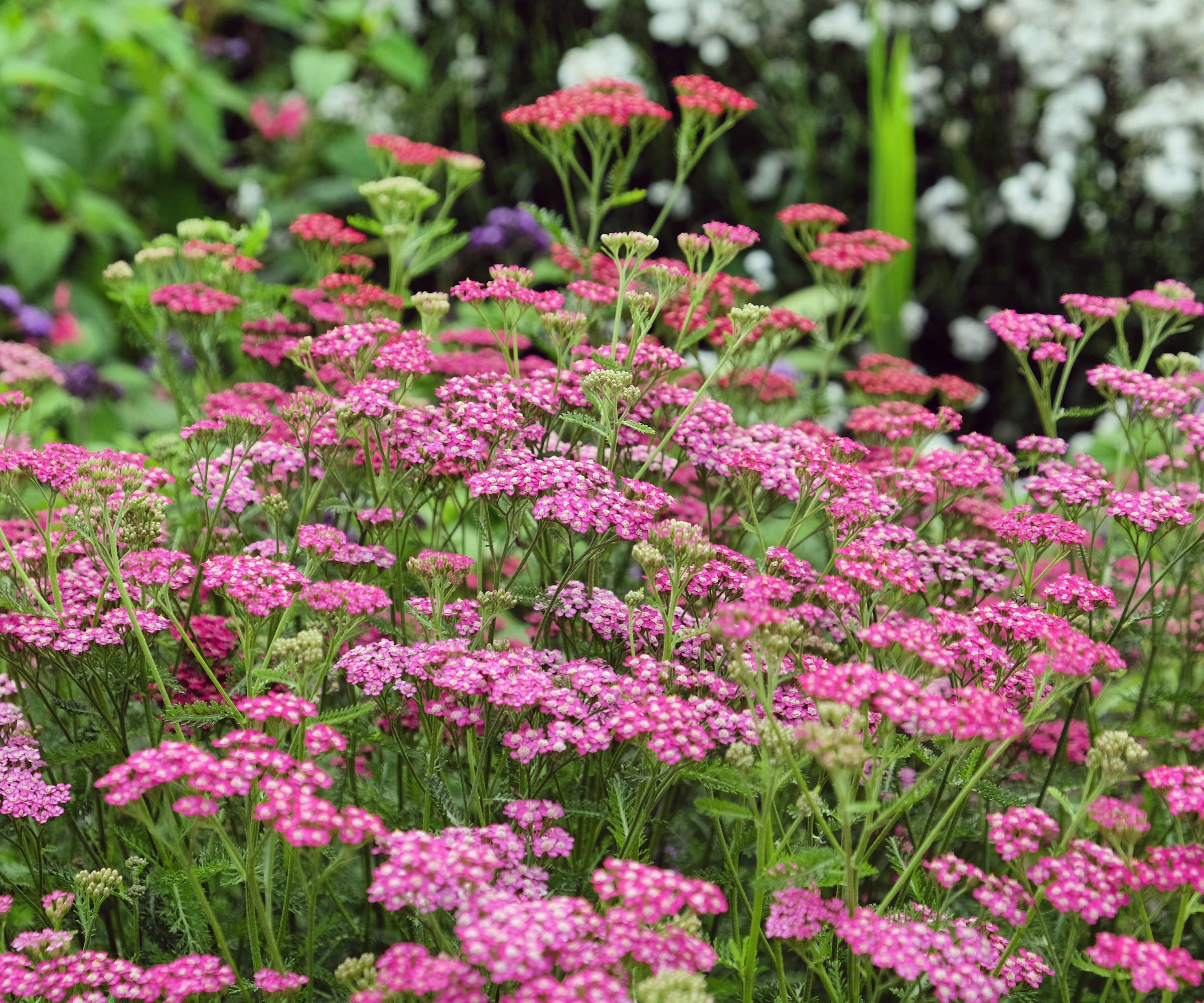
Yarrow, also known as achillea, produces tall stems that reach three feet high and sit topped with flat clusters packed full of small flower blooms.
Deadheading yarrow can extend the flowering display into fall and prevent the flower from self-seeding around the yard - which yarrow does have a propensity to do.
Come fall, it is beneficial to cut back the yarrow to stop the tall stems from flopping over and looking messy. Prune back to the basal leaves in the fall, as these new leaves protect the crown from the winter colds.
7. Daylilies
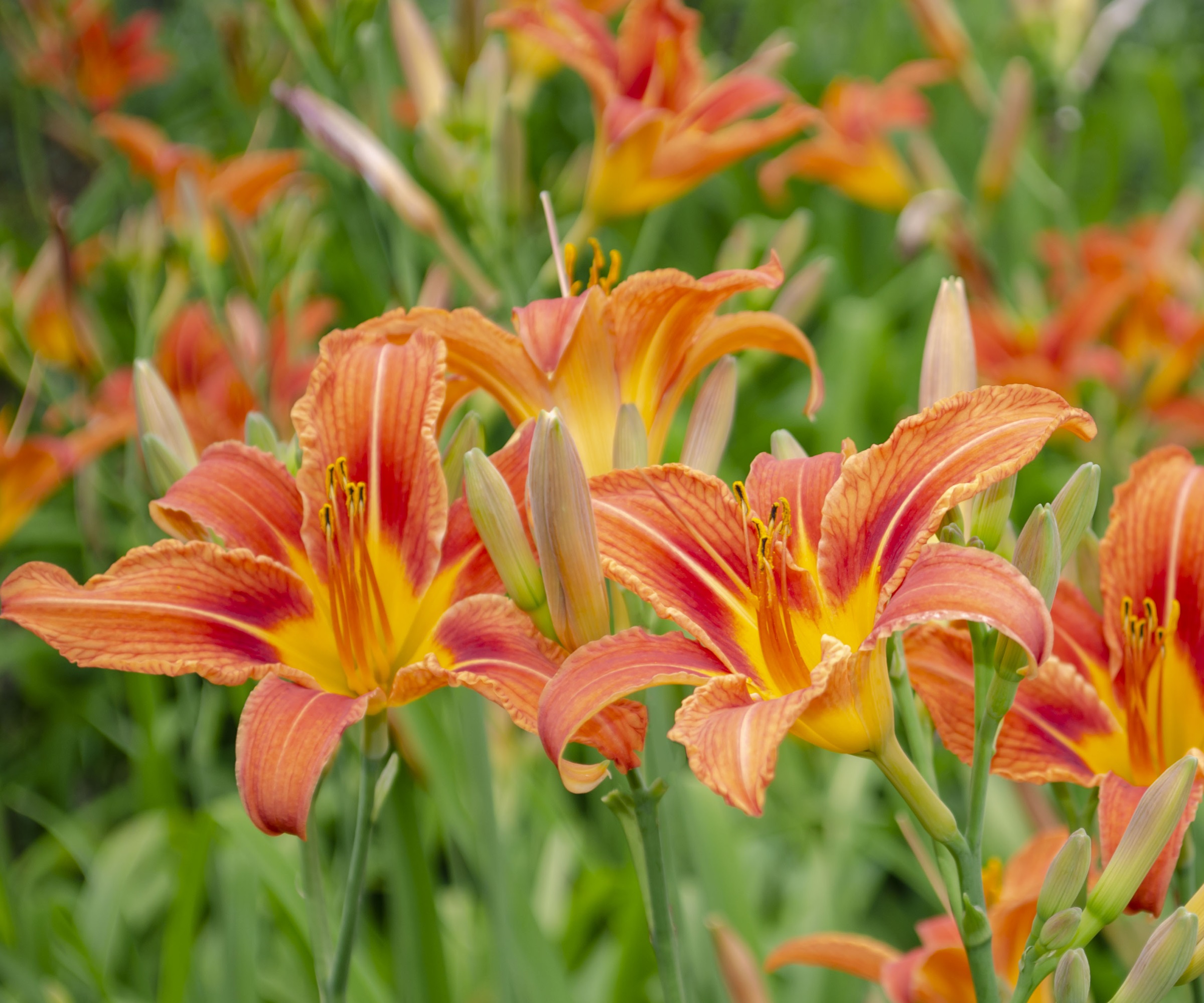
An individual daylily may only bloom for a day, but you get a bright display from the plants through summer and fall. They are low-maintenance perennials and usually pest-free but can look untidy once the foliage dies.
So, should you cut back daylilies in the fall? The answer is that the task is not absolutely necessary, but it does certainly tidy up beds and borders. It is an ideal gardening job for anyone growing daylilies who prefers a neat backyard over winter.
8. Catmint
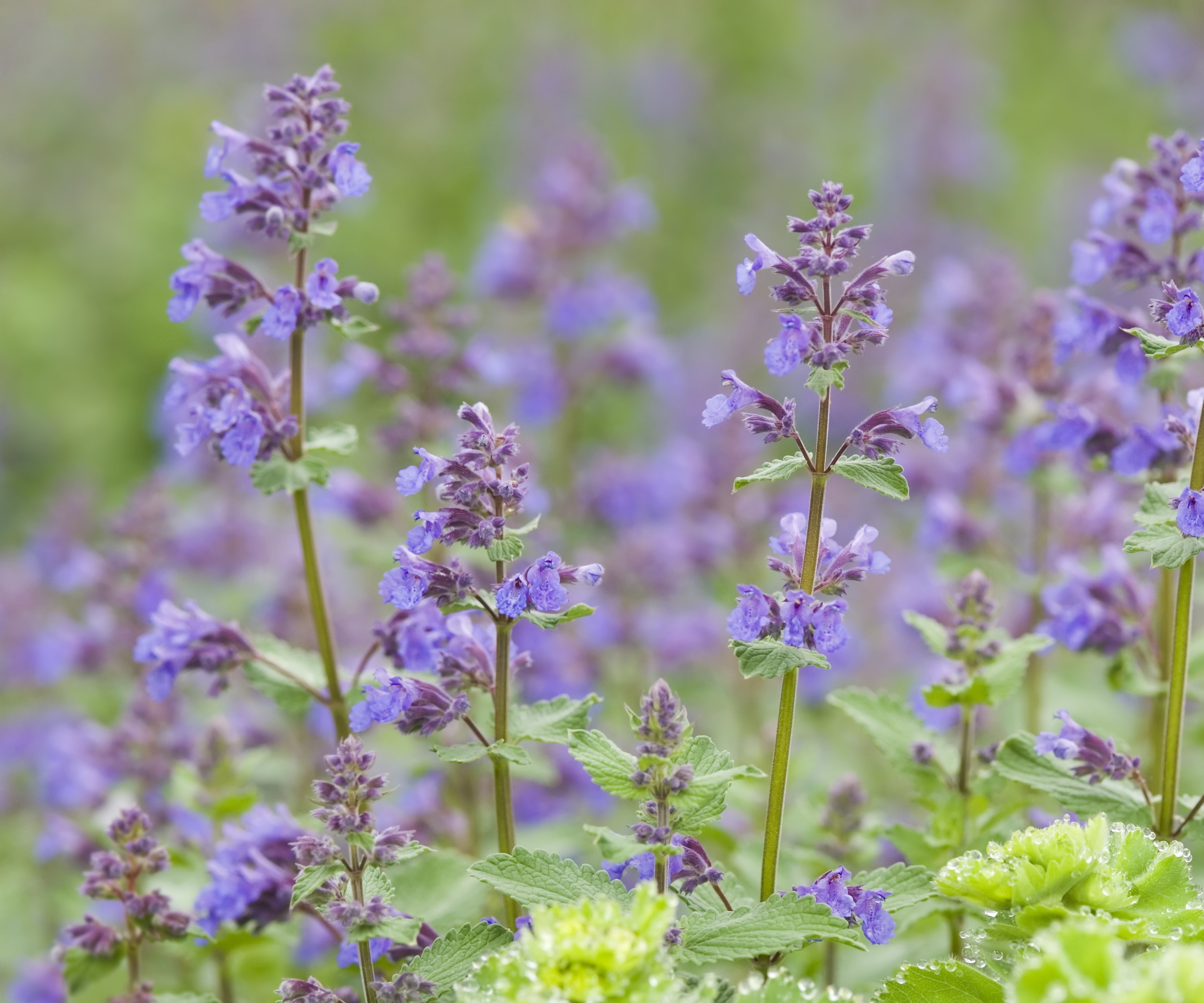
Catmint blooms throughout spring and summer, carpeting areas with silver-green fragrant foliage and lilac flowers. Bees and other beneficial insects love it and so do gardeners worldwide. There are various times to prune catmint throughout the year, including deadheading and giving it a ‘Chelsea Chop’ around May to encourage a new flush of blooms.
Come the fall, it is recommended to cut back catmint to tidy the plant as it often flops and can fall onto paths or other plants. This looks messy and is quick and simple to neaten up. Trim back the unkempt brown foliage after the frosts, but do not cut the plant back completely to the base. Leave 4-6 inches of the catmint in place to protect the crown and follow up to prune this back in spring.
9. Asters
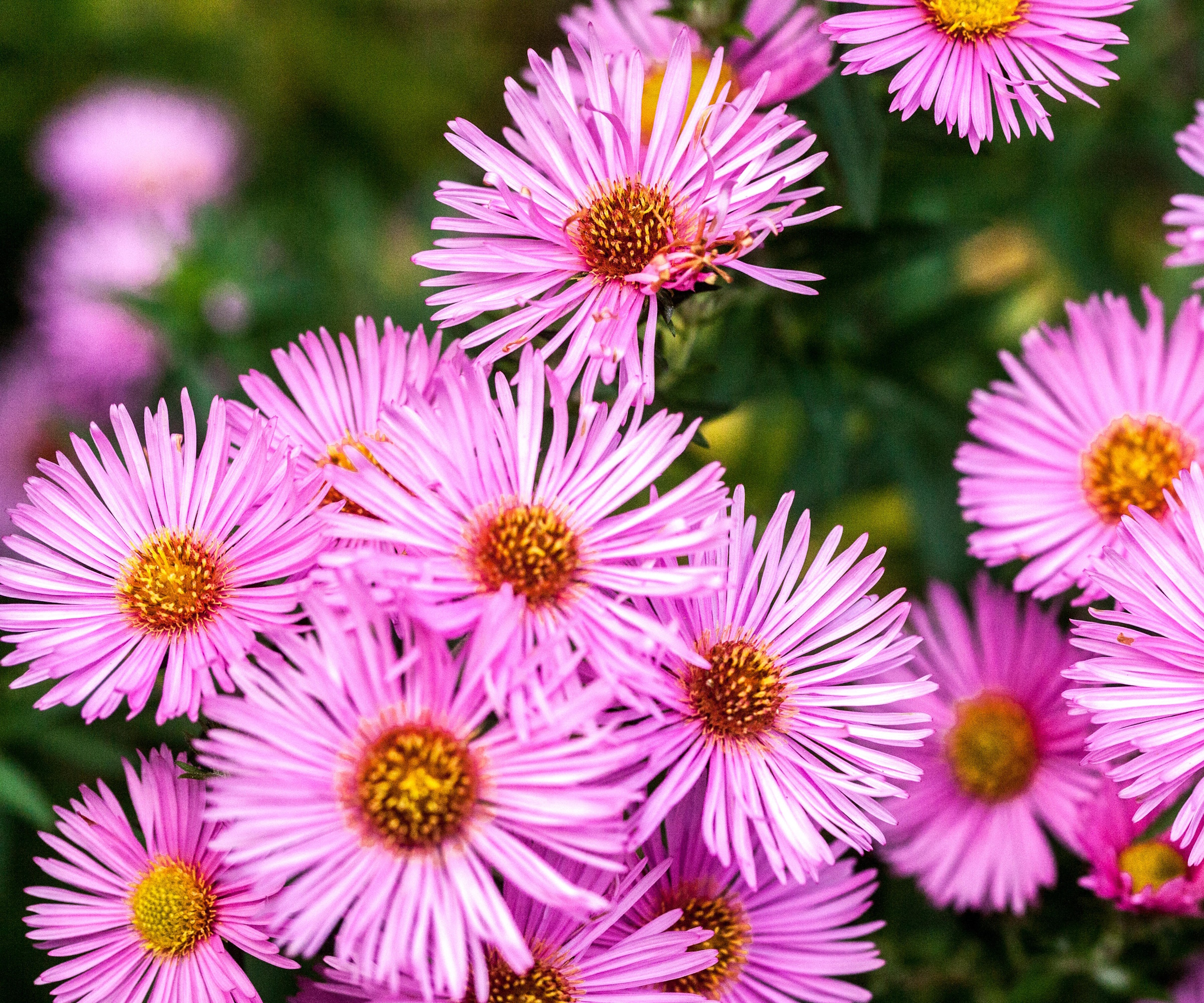
Asters bring color to your backyard ideas in late summer and early fall. There are hundreds of aster varieties to grow and, while some growers may prefer to trim them in spring, there are a couple of good reasons to cut back asters in the fall.
Firstly, asters are vigorous self-seeding flowers and any flowerheads left on the plant into late fall will be brown and tufty. Cutting back the perennials will stop the plant from dispersing seeds into unwanted areas.
Secondly, cutting back old plant debris can prevent fungal diseases and pests from overwintering. Fungal problems can be common in high-humidity areas and pruning will protect susceptible plants. In addition, leafhoppers and caterpillars are known to overwinter in old stems and foliage of aster plants.
10. Blackberry lily

The blackberry lily is actually a type of iris, rather than a lily. That contributes to one of the prime reasons to cut back this clump-forming perennial in fall. It is susceptible to iris borers. These troublesome pests eat the rhizomes and can ultimately cause a plant’s demise.
The borers overwinter as eggs on iris plants and blackberry lilies and cutting back will prevent these unwanted pests from sheltering during winter and starting to feed on rhizomes in spring.
Cutting back blackberry lilies is also beneficial as it can prevent the crown from rotting due to collapsed, wet foliage, and stop the plant from self-seeding. It is considered an invasive species in some northeastern areas of the US.
Shop pruning shears to cut back perennials in the fall
A pair of quality Japanese pruning shears with a high-grade steel blade and handles coated in vinyl for a non-slip grip. A perfect garden tool for a wide range of pruning tasks.
A pair of premium pruning shears constructed of forged aluminum handles and hardened steel blades. The narrow pointed anvil blade allows easy access to branches.
A pair of ergonomic pruning shears for cutting plant material up to 5/8" in diameter. With a soft grip handle that reduces hand fatigue and a low-friction coating to resist rust.
Using clean pruning shears to cut back perennials in the fall is important to prevent spreading diseases around the garden. Sanitizing garden tools when moving between plants only takes a small amount of time and it is worth doing as it avoids moving fungal spores or bacteria between different plants.







